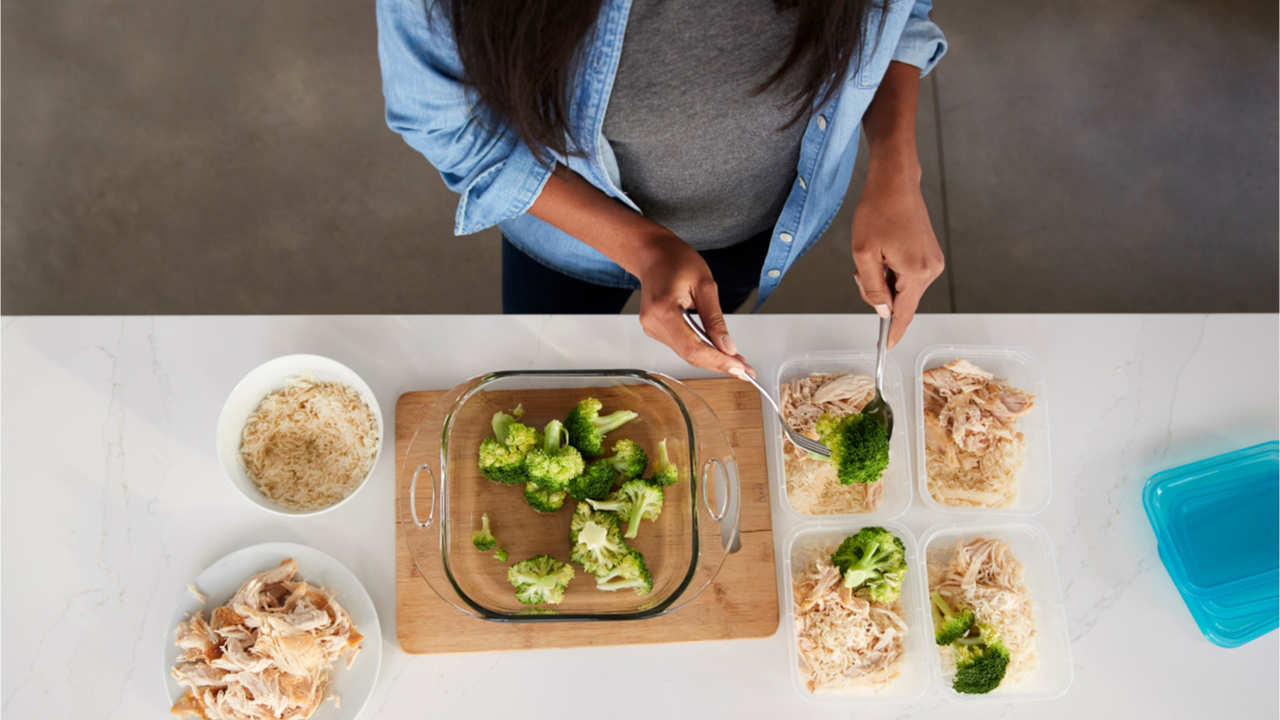How to plan ahead with batch cooking

Batch cooking, or cooking in bulk, means cooking larger amounts of food so you can store some for later.
If you don’t have time to cook every day, it’s a great way to make sure you have healthy meals ready when you need them.
What does batch cooking involve?
The main idea of batch cooking is to double or triple up on ingredients when you’re cooking a meal. The extra two or three meals can go in the fridge to be eaten during the week or in the freezer for a later date.
If you don’t want to cook whole meals, you can batch cook the ingredients that take the longest, such as potatoes, brown rice, quinoa, lentils, or beans. Cooking in bulk allows you to easily reheat these foods or use them as ingredients in recipes during the week.
What’s good to batch cook and use for leftovers?
Soups, casseroles, stews and curries can all easily be made in bulk and stored in individual portion containers or larger family sized containers in either the fridge or freezer.
- Our top batch cooking ideas include soups, casseroles, stews and curries as they can all easily be made in bulk and stored in individual portion containers or larger containers in either the fridge or freezer.
- If you are keeping the extra portions in the fridge, make sure to eat them within three days.
- If you are batch cooking freezer meals, remember that the safest way to defrost food is in the fridge.
You could also batch cook ingredients that take a while to cook and can be used as core ingredients for meals, such as brown rice, quinoa or lentils. These can be used in different meal combinations during the week.
Foods that freeze well
Here are some foods that can be stored in the freezer:
- Most fruits freeze well – just make sure to peel and chop them into individual servings and you’ve saved yourself a lot of potential food waste!
- Most vegetables can also be frozen, just chop up into servings. Now they’re all prepped to go. Vegetables that do not freeze well are cabbage, cucumbers, celery and potatoes.
- In terms of household staples, milk, bread and butter can all be frozen.
- All meat and fish can be frozen. Freeze them in portions so you can just defrost what you need.
- Fresh herbs, cooked rice and grains, and even whole meals can be frozen and defrosted as needed. Fried foods do not freeze well.
- Wondering whether you can freeze cooked rice or unsure if you can freeze cheese? There's more information about freezing on this page.
Low on freezer space?
- Buy staples that can used across a range of dishes such as mincemeat which can be used for spaghetti Bolognese, lasagne, shepherd’s pie, homemade burgers and so on.
- Remove foods from their boxes and store them in small freezer bags and containers instead to make the most of the space you have.
- Don’t bulk store. There is no need to have three loaves of bread in the freezer if you won’t use them in the next week or two. Only buy and store what you need and will use.
Here are some of safefood's best batch cooking recipes
- Family shepherd's pie / Spaghetti Bolognese / Lasagne
- Beef or vegetarian chilli
- Beef or vegetarian goulash
- Beef or lentil stew
- Lentil soup
- Three bean and tomato soup
- Curries (chicken and coconut, chickpea and lentil)
- Chicken casserole
- Fish pie
Tip: You can always bulk out these meals with extra veggies and switch up the grain of choice for more variety




